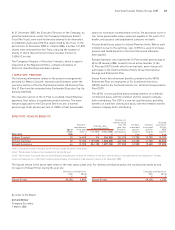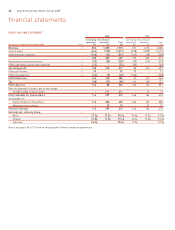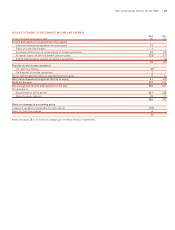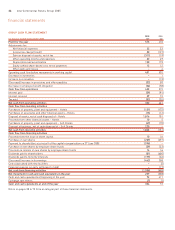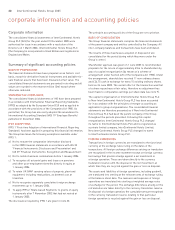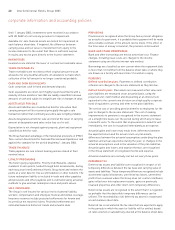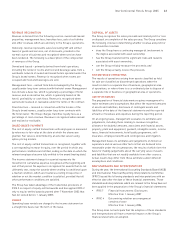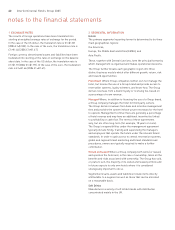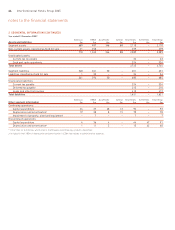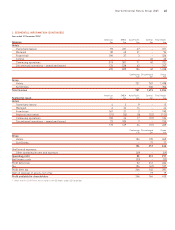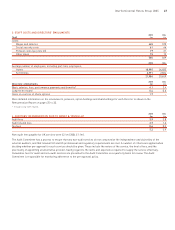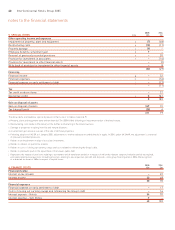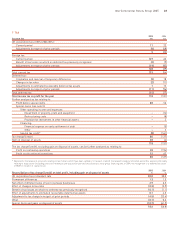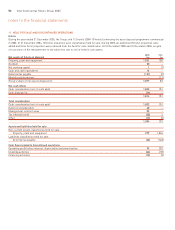Holiday Inn 2005 Annual Report Download - page 44
Download and view the complete annual report
Please find page 44 of the 2005 Holiday Inn annual report below. You can navigate through the pages in the report by either clicking on the pages listed below, or by using the keyword search tool below to find specific information within the annual report.
1 EXCHANGE RATES
The results of foreign operations have been translated into
sterling at weighted average rates of exchange for the period.
In the case of the US dollar, the translation rate is £1=$1.83
(2004 £1=$1.82). In the case of the euro, the translation rate is
£1=€1.46 (2004 £1=€1.47).
Foreign currency denominated assets and liabilities have been
translated into sterling at the rates of exchange on the balance
sheet date. In the case of the US dollar, the translation rate is
£1=$1.73 (2004 £1=$1.93). In the case of the euro, the translation
rate is £1=€1.46 (2004 £1=€1.41).
2 SEGMENTAL INFORMATION
Hotels
The primary segmental reporting format is determined to be three
main geographical regions:
the Americas;
Europe, the Middle East and Africa (EMEA); and
Asia Pacific.
These, together with Central functions, form the principal format by
which management is organised and makes operational decisions.
The Group further breaks each geographic region into three
distinct business models which offer different growth, return, risk
and reward opportunities:
Franchised Where Group companies neither own nor manage the
hotel, but license the use of a Group brand and provide access to
reservation systems, loyalty schemes, and know-how. The Group
derives revenues from a brand royalty or licensing fee, based on
a percentage of room revenue.
Managed Where, in addition to licensing the use of a Group brand,
a Group company manages the hotel for third party owners.
The Group derives revenues from base and incentive management
fees and provides the system infrastructure necessary for the hotel
to operate. Management contract fees are generally a percentage
of hotel revenue and may have an additional incentive fee linked
to profitability or cash flow. The terms of these agreements
vary, but are often long-term (for example, 10 years or more).
The Group’s responsibilities under the management agreement
typically include hiring, training and supervising the managers
and employees that operate the hotels under the relevant brand
standards. In order to gain access to central reservation systems,
global and regional brand marketing and brand standards and
procedures, owners are typically required to make a further
contribution.
Owned and leased Where a Group company both owns (or leases)
and operates the hotel and, in the case of ownership, takes all the
benefits and risks associated with ownership. The Group has sold,
or plans to sell, the majority of its owned and leased portfolio and
in future expects to only own hotels where it is considered
strategically important to do so.
Segmental results, assets and liabilities include items directly
attributable to a segment as well as those that can be allocated
on a reasonable basis.
Soft Drinks
Manufactures a variety of soft drink brands with distribution
concentrated mainly in the UK.
notes to the financial statements
42 InterContinental Hotels Group 2005



